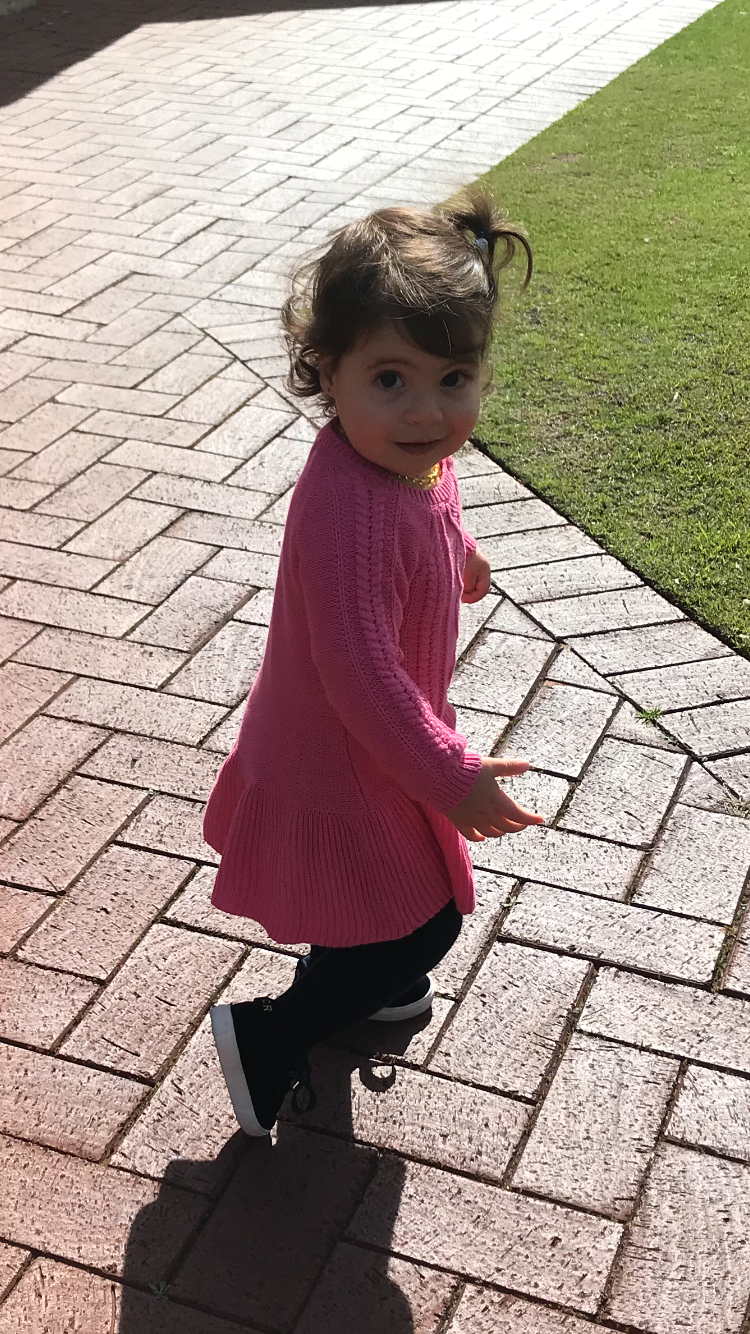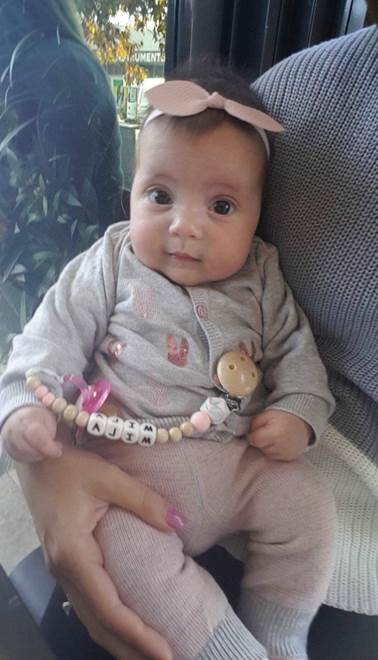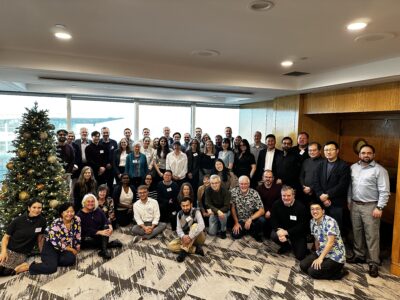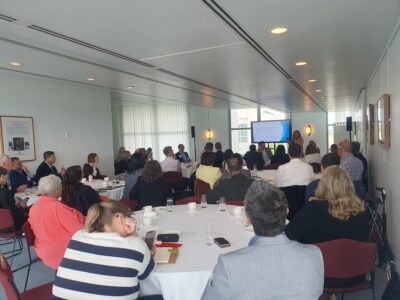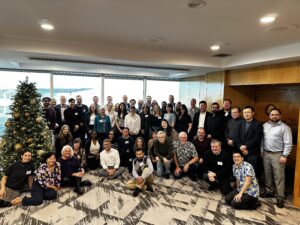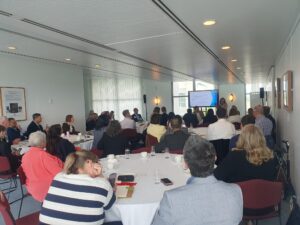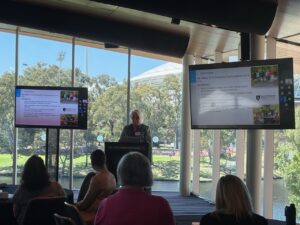Lara and Paul Martelli are very active members of our Unicorn community, with Paul being a member of our Consumer Advisory Group and helping at support group meetings in WA. Please read their beautifully written personal story below which they have kindly shared to help others who might be facing similar journeys with NETs.
1.
Lara, can you tell us a bit about
the impact of MEN1 and NETs on your life (and in your family)?
I found out that I had MEN1 when I was 12 years old. I had severe stomach pains one day which an ultrasound
showed a large mass on my right ovary. I
immediately had surgery to remove the tumour (which I presume was a NET) along
with my right ovary and appendix. It was
after this surgery that I was tested for MEN1 as my father had the genetic
condition (deceased 2002 age of 41). It
came back positive. I was then monitored
very closely by an endocrinologist.
Routine
blood tests for years later indicated high Chromogranin A levels. Fearing a
return of my cancer I had a PET scan. The scan came back showing multiple intra-abdominal
NETs. I had surgery to remove these
tumours – A large vertical incision was made down the middle of my stomach. This
was one of the hardest things I’ve ever had to face in my life as I was only
16. I was ashamed of my scar and couldn’t bear to wear a bikini or expose my
scar in public. I also missed a significant chunk of high school and remember
being so depressed because I just couldn’t understand why this was happening to
me.
The following year whilst in my final year of high school I had surgery to remove a tumour on my pituitary
gland which was initially suspected as causing my developing Cushing’s syndrome.
In 6 months I gained 20kgs, reddish stretch marks, a round red face, a fat lump deposit
between the shoulders, acne, and was
constantly fatigued and tired. As a result of the unexpected and sudden weight
gain I became depressed and shut-off from the world. The tumour that was
removed proved not to be the cause and later had a bilateral adrenalectomy to
relieve me of my Cushing’s
syndrome. The surgery was a success and I returned to my
‘normal’ weight soon after, however, my body shape was altered permanently. This
surgery has had the biggest impact on my life as I am now cortisone dependant
which I require on a daily basis.
These events robbed months off my final year of
high school. However I was focused and determined
to graduate and go to University. I look
back now I really don’t understand how I was able to overcome these obstacles –
but I did, I graduated high school and went on to complete a Bachelor of
Commerce.
A year later
it was decided that I would need my thyroid, thymes and parathyroid glands
removed due to my very low bone density and constant kidney stones. That same
year I also had a second pituitary tumour partially removed. After this surgery
I underwent 6 weeks of radiotherapy. I now have biennial MRI’s to keep an eye
on that tumour.
Unfortunately In 2014 I was diagnosed with metastatic
NETs to my pancreas, lymph nodes and vertebral column (backbone). From mid 2015
until December 2015 I had four rounds of Lutetium-177 Octreotate Lutate Therapy
combined with Capecitabine and Temozolomide at Fiona Stanley Hosptial in
Perth. Thankfully the treatment was a success resulting in my disease being stable.
Just when I thought I could return to some
normality six weeks before our wedding day I suffered a bowel obstruction
whilst I was at work. My stomach
incision from my earlier abdominal surgery in 2007 was re opened and my bowel
was “untangled” – the cause being adhesion scaring from multiple previous
surgeries.
In 2018 I was 34
weeks pregnant with my first born when I had another bowel obstruction caused
by adhesion scarring. Thankfully our baby daughter was delivered successfully
but she had to spend several weeks in neo-natal.
To say it’s been
a long and eventful road for living with NETs is an understatement. My MEN1 and
resulting NETs have had a significant direct and indirect impact on my life. Nevertheless I feel that this disease has shaped me into
being a stronger, more resilient, understanding and determined person who
accepts whatever challenges and curveballs life throws at me with open arms.
2.
Lara and Paul, can you tell us
about your decision to undergo IVF, in order to ensure your baby did not carry
the MEN1 gene?
IVF was something that we had discussed during the first 12
months of our relationship but never actively looked into until the time came.
Whilst at an appointment discussing Lutetium-177 Octreotate
Lutate Therapy for my metastatic NETs diagnosed in 2014, we asked the
physicians if the treatment would affect my fertility. No one could provide an answer as the
treatment hadn’t been given to anyone as young as me who was also looking to
have a family. It was here that Paul and
I finally resigned ourselves to IVF if we wanted to have a family. We both
agreed that we would never bring a child into this world knowing there was a
possibility of it having MEN1 and resulting NETs. We were very determined to end this horrible
gene with me so our children and grand children would never have to deal with what
I had been forced to live with.
We then completed two cycles of IVF where pre implantation
genetic diagnosis (PGD) was conducted and our embryos screened for the MEN1
mutation. These two IVF cycles were conducted prior to my treatment.
3.
Was there any impact for you Lara,
in terms of your pregnancy, having had NETs?
As well as seeing my obstetrician I also saw a general physician
who monitored all of my blood tests and overall well being given my extensive
medical history. I also had to adjust some of my medications and keep on top of
my cortisone medication to help me through the pregnancy.
Apart from the increased monitoring I think my pregnancy was
like any other for the most part. The biggest impact from having NETs however
would’ve been the indirect impact from adhesions and scarring (from previous
surgeries) that led to my bowel obstruction and early delivery.
4.
Paul and Lara,
what was the most surprising thing about your experience?
The amazing things modern science can do – we now have the
ability to eradicate some of the most horrible diseases and conditions from the
next generation. Hope is such a powerful and motivating force – IVF and PGD were
able to make this a reality for us.
Another surprise was the amount of other couples that we
observed using assisted fertility treatment. Couples of all different ages,
ethnicities and backgrounds were using IVF – there is no stereo type couple.
5.
What was the most challenging thing
about the whole process?
Having patience and being positive. The process can be emotionally
draining and difficult whilst managing work commitments, health and wellbeing,
and life in general. So much of the process is out of your hands and control.
In the early stages of IVF you spend a lot of time waiting – waiting for the
embryos to become ‘viable’ and for the PGD test results.
Then there was the arduous two-week wait after implantation on a
positive pregnancy result. Unfortunately our first embryo transfer wasn’t
successful. We were however able to regroup immediately and attempt a second
embryo transfer within weeks which resulted in the birth our beautiful daughter
Mila in February 2017.
6.
What was the
most helpful thing to you both as you went through this experience?
The expertise and experience of the IVF specialists and
obstetrician that assisted us was very welcoming. They assisted us throughout our
journey, answered all our questions and made us feel as comfortable as possible
throughout our experience.
Being positive and not thinking too much about ‘what if’s’ and
worst case scenarios. Keeping busy during the initial two week wait and trying
to live as much as possible a normal life assisted greatly during the entire
process. You can drive yourself crazy thinking of different scenarios and
outcomes – we however learned to take comfort in the fact that much of the
process was out of control and learned to accept whatever will be will be.
7.
What advice would you to give to
someone contemplating this process?
Positivity and patience is key. It is a tiring and emotional
rollercoaster but I would do it a million times over. When I look at my baby
girl I feel a deep sense of pride and strength knowing that the fight against
MEN1 ends with me – she will NEVER need to deal with it as I’ve put a stop to
it. She is my greatest achievement in life.
